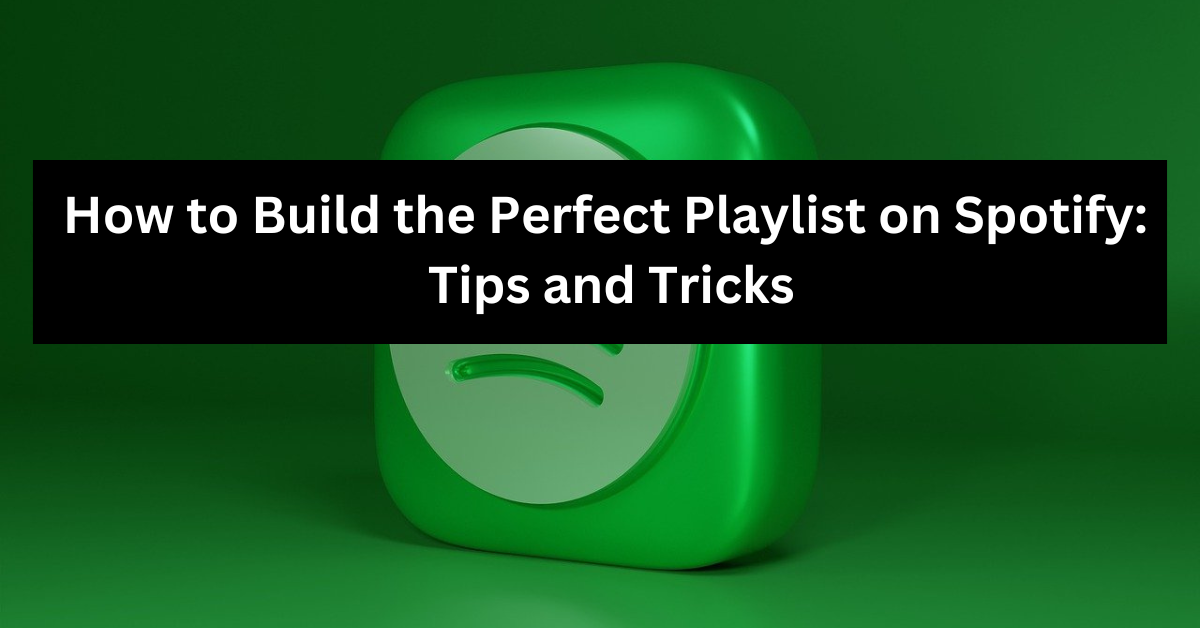Spotify is more than just a music streaming platform—it’s a world of limitless possibilities for music lovers. Whether you’re creating a playlist for a party, a workout, or just for your personal enjoyment, crafting the perfect playlist on Spotify can enhance your music experience. But how do you build a playlist that not only reflects your taste but also keeps your listeners engaged? In this article, we’ll explore tips and tricks to help you create the perfect Spotify playlist, no matter the occasion.
What is a Playlist on Spotify?
A playlist on Spotify is a collection of songs that you can curate and organize based on your preferences, moods, or themes. Playlists can be created from songs already in your library or by discovering new tracks using Spotify’s vast catalog of music. Playlists on Spotify can be public, meaning your friends or the wider community can listen, or private, meaning only you can enjoy the music.
Spotify playlists can be as simple or complex as you want, and whether you’re creating a playlist for yourself or sharing it with others, building a cohesive and enjoyable playlist requires a mix of creativity and strategy.
Why Build a Playlist on Spotify?
Building a playlist is more than just grouping songs together. It allows you to:
- Set the Mood: A well-crafted playlist can reflect and enhance your mood, whether you’re feeling energized, relaxed, or focused.
- Curate Music for Events: Playlists are perfect for events like parties, dinners, or road trips. By tailoring your selections to the event, you can elevate the atmosphere.
- Discover New Music: While building a playlist, you’ll likely stumble upon new artists and songs that you may not have discovered otherwise.
- Share with Others: Playlists can be shared with friends, family, or the public, helping you connect with others who have similar music tastes.
Steps to Build the Perfect Playlist on Spotify
Now that you understand the importance of playlists, let’s dive into the steps you need to follow to build the perfect Spotify playlist. Whether you’re starting from scratch or working with an existing collection of songs, these tips will ensure your playlist stands out.
Step 1: Choose a Theme or Mood for Your Playlist
Before you start adding songs, it’s important to decide on a theme or mood for your playlist. This will guide your song selection and help create a cohesive listening experience. Here are a few popular ideas to get you started:
- Mood-Based Playlists: Think of emotions like happy, sad, energetic, or relaxed. For example, you can create a “Morning Motivation” playlist or a “Chill Vibes” playlist.
- Activity-Based Playlists: Consider playlists for activities like “Workout Hits,” “Road Trip Tunes,” or “Dinner Party Jams.”
- Genre-Based Playlists: Build playlists around specific genres like pop, rock, hip-hop, or indie. Alternatively, focus on a particular subgenre or decade of music.
- Artist or Album-Based Playlists: Curate a playlist based on songs from a particular artist, album, or even collaborations between artists you love.
Choosing a theme will make your playlist more relevant and enjoyable for your target audience or for yourself.
Step 2: Select Songs That Fit the Theme
Once you’ve settled on a theme, it’s time to pick the songs that fit the vibe. Here are some tips for selecting the best tracks:
- Start with Favorites: Begin by adding songs you already love. These are the tracks that you know will make the playlist enjoyable.
- Add Variety: While it’s important to stick to your theme, try to mix up the pace and energy of the songs to create an engaging listening experience. For example, a “Chill Vibes” playlist could start with slow songs, then add some mid-tempo tracks before slowing down again at the end.
- Explore Spotify’s Recommendations: As you add songs, Spotify will suggest related tracks based on your choices. Use the “Radio” feature to create a playlist similar to a specific track or artist and discover new songs.
- Use Your Playlist to Explore New Music: Don’t be afraid to add songs from artists you haven’t listened to before. A perfect playlist should introduce a blend of familiar and new music.
Step 3: Create Flow Between Songs
A great playlist isn’t just about the individual songs; it’s about how the songs flow together. To create a seamless listening experience, follow these tips:
- Think About Transitions: Pay attention to how songs transition from one to the next. For example, starting with a slow track and then suddenly jumping to an upbeat song might disrupt the flow. Consider the tempo, mood, and key of each song when placing them next to each other.
- Consider Song Length: Avoid putting too many long tracks in a row. A balance of short and long songs can maintain interest and keep the playlist dynamic.
- Use Spotify’s Crossfade Feature: Spotify allows you to enable the Crossfade feature, which lets songs fade into one another seamlessly. This can help make transitions between songs feel smoother.
Step 4: Add a Personal Touch
A personalized playlist is much more engaging than a generic one. Here’s how you can add your personal touch:
- Create a Story or Journey: Instead of just choosing random songs, think about telling a story through your playlist. For example, you could create a playlist that mimics the arc of a movie or focuses on a specific life event, like a breakup or a road trip.
- Experiment with Different Genres: Don’t be afraid to mix genres within your theme. Adding unexpected tracks from different genres can create an exciting and diverse listening experience.
- Include Lesser-Known Tracks: Alongside popular hits, include some lesser-known tracks from up-and-coming artists. This not only adds depth to your playlist but also helps you share hidden gems with others.
Step 5: Edit and Refine Your Playlist
Once you’ve created your playlist, take a step back and listen to it in its entirety. Editing and refining your playlist will ensure it’s as perfect as possible:
- Rearrange Tracks: As you listen through, you may find that some songs don’t fit as well as you thought. Don’t hesitate to reorder them or remove tracks that seem out of place.
- Consider the Length: While there’s no exact rule for how long a playlist should be, the ideal length depends on the theme and purpose of your playlist. Aim for around 30-50 songs, but feel free to go longer or shorter if it makes sense.
- Test Your Playlist: After editing, listen to the playlist in full. Does the playlist maintain its energy and flow? Does it match the mood you intended? Make tweaks as needed.
Step 6: Add a Playlist Cover and Description
A good playlist needs an inviting cover and description. These elements not only help personalize the playlist but also make it more appealing to your audience.
- Create a Custom Cover: Use a catchy image that reflects the mood or theme of the playlist. Spotify allows you to upload your own cover image, which can be a photo, graphic, or even an album cover from one of the songs.
- Write a Fun Description: Add a short description explaining the purpose of the playlist. Whether it’s a description of the mood, the inspiration behind the playlist, or how to enjoy it, a compelling description helps connect with listeners.
Step 7: Share Your Playlist
Once you’ve perfected your playlist, it’s time to share it! You can share your playlist on social media, embed it in a blog post, or send it directly to friends and family. Here’s how to share:
- Share via Social Media: Spotify allows you to share your playlist directly to platforms like Facebook, Instagram, and Twitter.
- Collaborate with Friends: You can make your playlist collaborative, which allows friends to add their own tracks to the mix.
- Embed Playlist on Your Website or Blog: Spotify provides an embed code, so you can add your playlist directly to your website or blog.
Additional Tips and Tricks for Building the Perfect Playlist
- Use Spotify’s “Private Session” Feature: If you don’t want your song choices to influence Spotify’s recommendations, use the Private Session feature while curating your playlist.
- Follow Playlists: To get inspired, follow playlists created by others. It can help spark ideas and guide your own playlist creation.
- Stay Updated: Keep your playlist fresh by regularly adding new songs and removing old ones. Spotify makes it easy to update playlists whenever you discover new tracks.
Conclusion
Building the perfect playlist on Spotify isn’t just about choosing random songs. It’s about crafting a musical journey that aligns with a theme, mood, or event. With the right planning, song selection, and attention to flow, you can create playlists that enhance any experience, whether it’s a personal workout session, a road trip, or a night out with friends.
By following the tips and tricks mentioned in this guide, you’ll be able to curate a playlist that stands out and keeps your listeners coming back for more. So, go ahead, start building your next perfect playlist on Spotify today and share it with the world!



